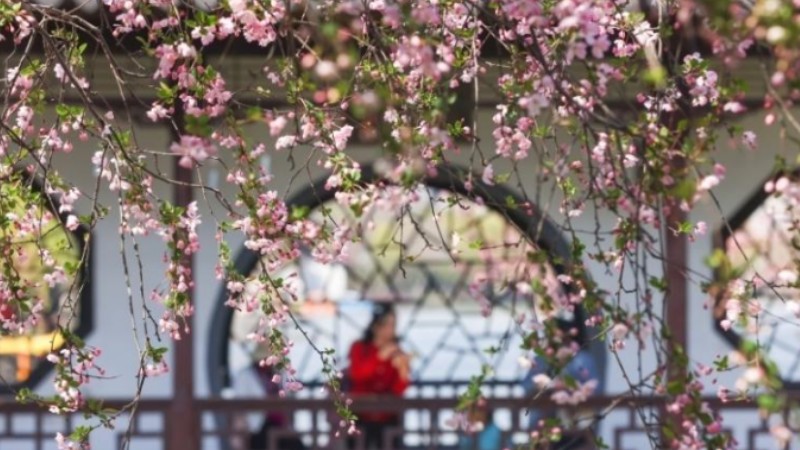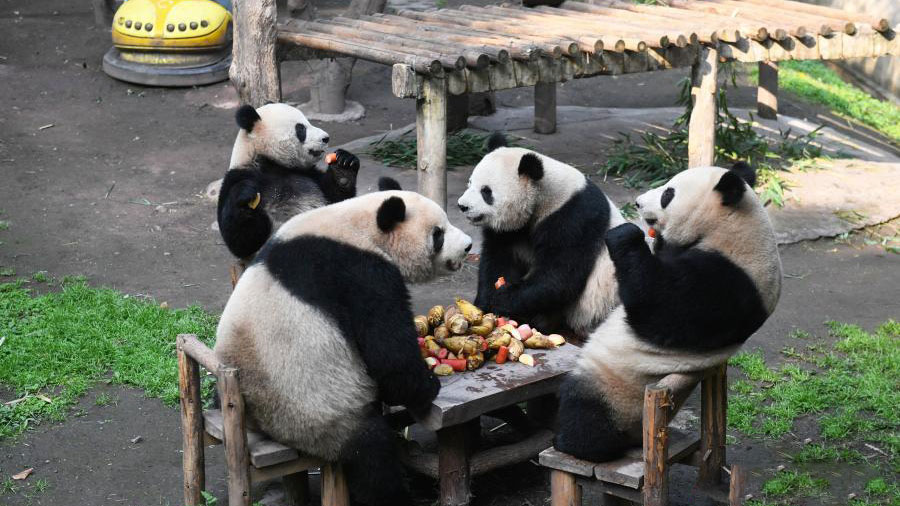Modern orah mandarin industry boosts farmer's livelihood
NANNING, March 16 (Xinhua) -- Gu Qiufang, a 45-year-old packer who works for Guangxi Qifeng Juzhou Fruit Industry Co., Ltd. in Wuming District of Nanning City, south China's Guangxi Zhuang Autonomous Region, carefully put the orah mandarins into the packaging box, making sure it could be smoothly exported.
The mandarins he was packing had been carefully selected, ensuring that they were all plump and had bright skins. "To keep the high quality of the fruit, it must not be damaged during the packaging and transporting process," Gu said as he explained the requirements of his job, while adding that this batch of mandarins, about 14 tonnes in total, would be shipped to Vietnam.
The orah mandarin is a thick-skinned citrus fruit, which originates in Israel, and which has been planted in Wuming District since 2012. Thanks to the unique subtropical monsoon climate and soil conditions, the sweetness of the Wuming orah mandarin is slightly stronger than the sourness, which perfectly meets consumer demands, resulting in a distinct market advantage.
The planting area of the orah mandarin in Guangxi reached over 123,000 hectares in 2022, with an annual yield of 4.7 million tonnes. The output of orah mandarin in Wuming District reached over 1.5 million tonnes in 2022, with an output value exceeding 10 billion yuan (about 1.4 billion U.S. dollars), according to local agricultural authorities.
Over the past few years, with the construction and development of the China-ASEAN Free Trade Area (FTA) and the continuous improvement of the fruit quality, orah mandarins have gained popularity in overseas markets.
"We mainly export to ASEAN countries, including Vietnam, Thailand, and Singapore. From January to February this year, we exported 850 tonnes of mandarins, up 10 percent year on year," said Luo Zenggui, general manager of Guangxi Qifeng Juzhou Fruit Industry Co., Ltd.
He Qiu, deputy chief of the supervision department of customs in Nanning, the region's capital city, said that with the certificate of origin under FTA, the orah mandarins can enjoy tariff-free benefits when exported to ASEAN countries.
There are 22 enterprises engaged in the export of orah mandarin in Wuming District, accounting for almost half of the figure of related enterprises in Guangxi, said He, noting that the export of this fruit is still surging due to the improvement of the orah mandarin quality.
Thanks to the booming sales of orah mandarin in domestic and overseas markets, the orah mandarin industry has now become one of the key rural industries that boosts local farmers' livelihoods.
In Xialu Village under Wuming District, the orah mandarin has become villagers' main source of income. The net income of planting about 0.07 hectares of orah mandarin is more than 10,000 yuan, according to Wei Dianyun, deputy Party chief of the village.
"Per capita disposable income in the village reached about 37,000 yuan in 2022," said Wei. "Attracted by high income, youngsters in the village no longer need to seek migrant jobs in cities."
According to Ou Yanhua, deputy director of the bureau of agriculture and rural affairs of Wuming District, there are 134 fruit sorting plants and 216 fruit processing production lines in the area, which can process more than 10,000 tonnes of fruit per day.
In addition, there are over 300 fruit fresh-keeping cold warehouses in the district, which can effectively prolong the fresh-keeping period and increase the added value of fruit products. "The fruit industry has absorbed more than 10,000 employees, and increased the income of local farmers by about 240 million yuan each year," Ou said.
To promote the modernization of agricultural industries, the district has rolled out a seed industry upgrading project, while also promoting the development of advanced agricultural facilities and applied high-tech and intelligent field management systems, in its efforts to improve plantation efficiency and fruit quality.
"We have established a big data center in the region for the orah mandarin industry. Using modern digital cloud technology, we have built an automated intelligent control system in the field, including an intelligent watering and fertilizing system," Ou said.
Farmers, sorting wholesalers and consumers are able to contact each other via the big data platform, ensuring the safety of the fruit and guaranteeing high quality, Ou added.
"Agricultural and rural modernization is an important part of the Chinese path to modernization and agricultural modernization is based on scientific and technological progress and innovation," said Xiao Anbao, a professor from Guangxi University.
"It is necessary to speed up the pace of agricultural industrialization and increase farmers' income, thereby allowing them to share the fruits of development," Xiao added.
Photos
Related Stories
Copyright © 2023 People's Daily Online. All Rights Reserved.









